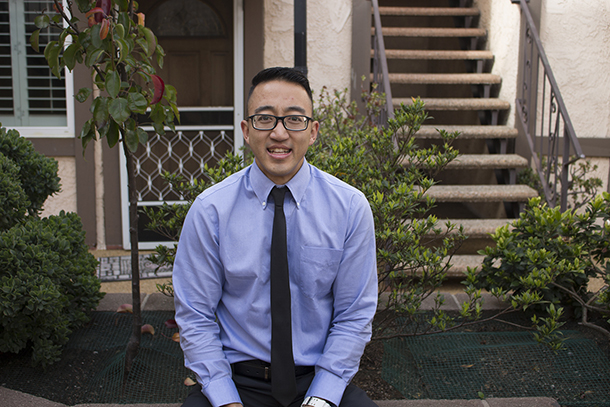On Christmas Day 2009, when Brandon Hsu was 18 years old, he was diagnosed with leukemia. Five months into treatment, he was in bed watching Modern Family when both of his calves started cramping, followed by his hamstrings. When he woke up his parents, his speech was slurred. By the time they rushed him to the emergency room, Hsu had lost the ability to speak, move his limbs and respond to commands.
“I had developed a life-threatening fever and was in excruciating pain, so the physicians opted to put me into a coma,” he said. Neurologists believe he had high-dose methotrexate-induced encephalopathy, a complication of chemotherapy.
When Hsu awoke a week later, all he could do was wiggle his toes. He underwent intensive physical, occupational and speech therapy and “literally had to relearn every motion I can produce today,” he said. “Within two weeks, they taught me the steps to walk again.” Once he could move, Hsu cried for three consecutive days. “I asked God, ‘Why?’ But I could not and would not let this minor setback stop me.”
This harrowing experience inspired Hsu to pursue a career in physical therapy. “The pediatric occupational and physical therapists at Lucile Packard Children’s Hospital at Stanford are the reasons why I am in this program today. I want to be a physical therapist to pay forward what my PTs have given me — a new life.”
Unstoppable
Although the experience left Hsu with a severe speech impediment, he never allowed it to stand in the way of achieving his dreams. To communicate with patients, faculty and peers, he used an iPhone, iPad and text-to-speech apps. Although terrified at first about what his classmates and professors would think of him, Hsu was pleasantly surprised by their reactions.
“I kept to myself because I didn’t want to let my classmates know I had a speech impediment,” he said. “Luckily, they were awesome and approached me to find my true personality.”
No average physical therapist
Hsu chose the doctor of physical therapy program at the USC Division of Biokinesiology and Physical Therapy because of its large class size and reputable professors, who he says were accommodating, approachable and expected him to succeed as a therapist.
“They do not want me or my classmates to be average therapists,” he said. “They want more than that.”
He credits USC’s faculty and staff with encouraging him to overcome any challenges he faced.
“They’ve allowed me multiple accommodations, were patient with me when I asked them questions before and after class and picked out clinical sites where they thought I had the best chance to succeed,” he said. “They continue to motivate and challenge me every day to understand human movement, better communicate with my peers and patients and use my experience to help motivate others.”
After graduation, Hsu plans to focus on outpatient mixed or outpatient orthopedics. He has his next steps meticulously laid out: Find a job, enter a physique bodybuilding show, win a physique bodybuilding show, accrue enough assets to open a gym/physical therapy clinic and host informational seminars in the gym/clinic.
“But most importantly, throughout all of this,” he said, “I want to have fun, laugh and enjoy living.”
— Michelle McCarthy


